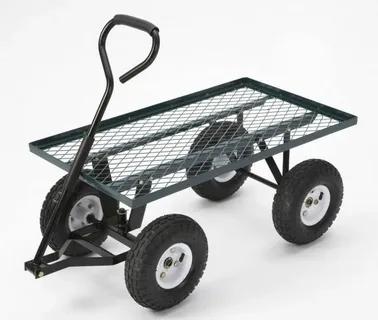
The geriatric carts market is seeing considerable growth because of the growing population of geriatric individuals, the rise in demand for elderly care, and medical cart technology advancements. With a forecasted CAGR of 4.8% from 2024 to 2031, the market will grow from US$ XX million in 2024 to US$ XX million by 2031.
Geriatric carts and food delivery carts serve as the baseline in aging care units, hospitals, and homecare settings worldwide to enable the mobility, storage needs, and medical support for elderly patients. These carts are made to better daily care, whereas food carts are specifically aimed at helping caregivers safely and efficiently deliver food to patients. The increase in adoption of smart, ergonomic, and multifunctional geriatric carts and innovations in food delivery carts will act as the growth engine for this market, raising the standards of eldercare and support in general.
Key Market Drivers
Increasing Geriatric Population: Increasing global geriatric population is driving the demand for specialized medical and mobility solutions. As per the WHO, in 2050, more than 2 billion people will be 60 or older, making better healthcare infrastructure a necessity.
Technological Innovations: Automated and electronically operated geriatric carts with IoT capability are improving ease of use and safety.
Growing Healthcare Investments: Governments and private organizations are investing significantly in geriatric healthcare, fueling the use of sophisticated geriatric carts.
Growing Prevalence of Chronic Diseases: Older people are more susceptible to chronic diseases, boosting the need for effective patient care equipment.
Market Segmentation
By Product Type
Medication Carts
Food Carts
Linen and Laundry Trolleys
Treatment Carts
Shower Trolleys
By End User
Hospitals and Clinics
Pension Agency
Household
Other
North America
US
Canada
Mexico
Europe
UK
Germany
France
Russia
These firms are launching intelligent geriatric carts with advanced features like remote monitoring, automated dispensing of medication, and voice-based assistance.
Challenges and Restraints
Despite the encouraging growth path, the geriatric carts market is affected by some challenges:
High Costs: Sophisticated geriatric carts with smart technology may prove costly, making their adoption unfeasible in low-income areas.
Limited Awareness in Developing Markets: Limited awareness and poor healthcare infrastructure can limit market penetration.
Regulatory Compliance Issues: Government regulations on medical devices can be a challenge for new entrants.
Future Opportunities
Integration of AI and IoT: The creation of AI-driven geriatric carts with real-time monitoring and emergency notifications is a huge opportunity.
Growth in Emerging Economies: Nations such as India, China, and Brazil are exhibiting growing need for geriatric healthcare products, opening up growth opportunities.
Sustainability Trends: Environmentally friendly products and energy-efficient designs are becoming popular, creating new opportunities for producers.
Conclusion
The market for geriatric carts is set for consistent growth, fueled by an aging population, technological progress, and expanding healthcare expenditure. Though there are challenges such as high expenditure and regulatory factors, technologies such as AI-equipped and automated geriatric carts will transform the industry.
With a forecasted CAGR of 4.8% during 2024-2031, the market is likely to achieve notable valuation milestones, rendering it a highly profitable sector for investment and growth.
FAQs
What is the forecasted growth rate of the geriatric carts market?
The market is likely to grow at a CAGR of 4.8% during 2024-2031.
What are the drivers for the growth of the geriatric carts market?
Key drivers are the rising geriatric population, technological upgradation, growing healthcare investments,
What are the regions that are seeing the highest demand for geriatric carts?
North America and Europe dominate the market, and the Asia-Pacific region is likely to grow at a high rate owing to an aging population and enhanced healthcare facilities.
What are the available types of geriatric carts in the market?
The market provides manual, automated, and intelligent geriatric carts, addressing different healthcare requirements.
Who are the major players in the geriatric carts market?
Key players are Herman Miller, Capsa Healthcare, Ergotron, Omnicell, Midmark, and Waterloo Healthcare.
What are the challenges facing the geriatric carts market?
Challenges are high prices, low awareness in developing countries, and regulatory compliance.
How are technological developments affecting the market?
Technology such as AI-based, IoT-enabled, and voice-operated geriatric carts is enhancing functionality and efficiency.





















Write a comment ...